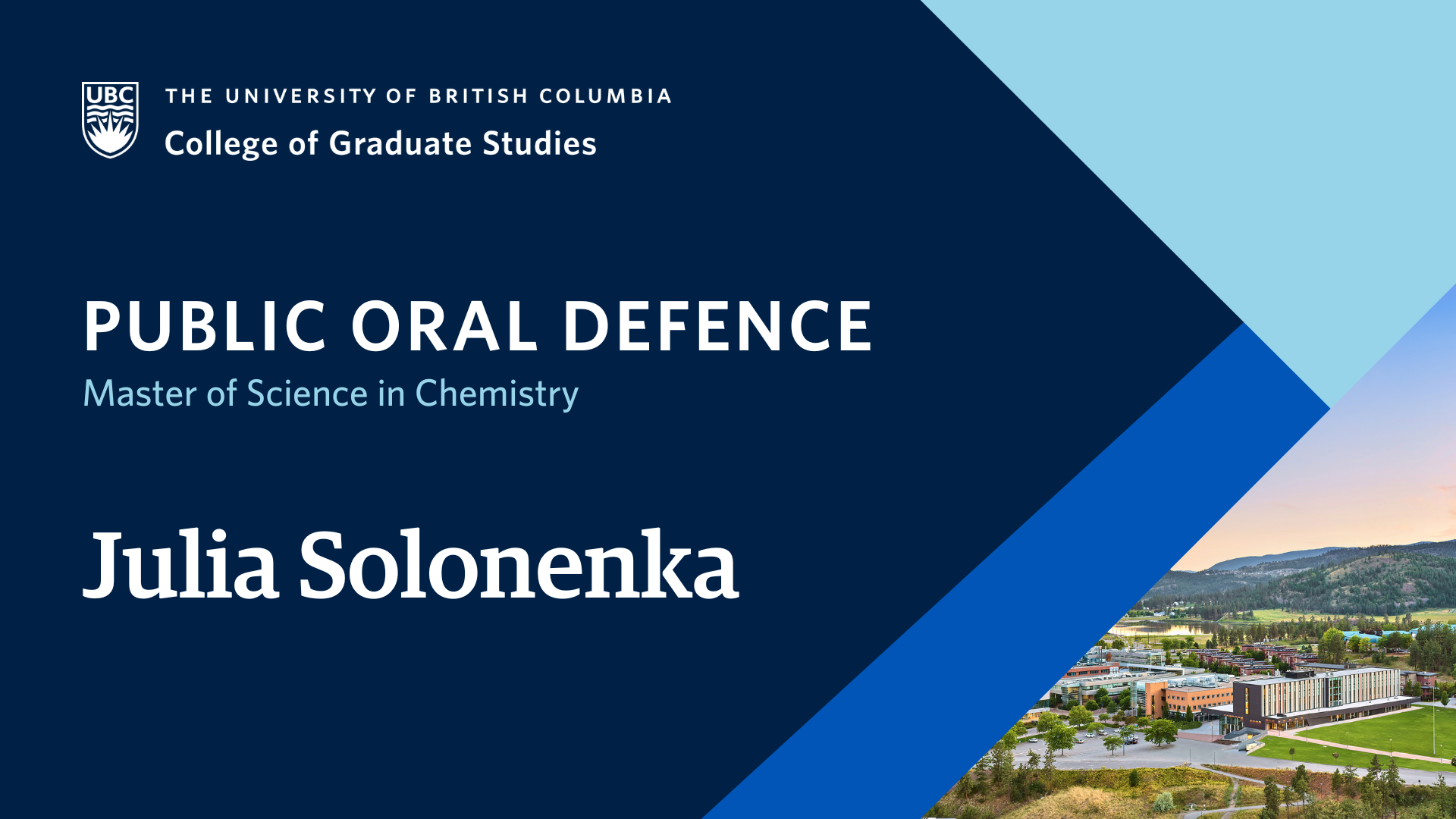
- This event has passed.
Thesis Defence: Characterizing β-N-Methylamino-L-alanine and its naturally occurring isomers in cyanobacteria and plants
July 19, 2023 at 10:00 am - 1:00 pm

Julia Solonenka, supervised by Dr. Susan Murch, will defend their thesis titled “Characterizing β-N-Methylamino-L-alanine and its naturally occurring isomers in cyanobacteria and plants” in partial fulfillment of the requirements for the degree of Master of Science in Chemistry.
An abstract for Julia Solonenka’s thesis is included below.
Defences are open to all members of the campus community as well as the general public. Registration is not required for in person defences.
ABSTRACT
β-N-Methylamino-L-alanine is a neurotoxic non-protein amino acid that is naturally produced by all taxonomic orders of cyanobacteria. Alongside BMAA, there are three isomers of interest: N-(2-aminoethyl)glycine (AEG); 2,4-diaminobutyric acid (DAB); and β-aminomethyl-L-alanine (BAMA), that have also been detected in cyanobacteria. While BMAA has been detected in a number of plant-cyanobacterial symbioses, there have been no explicit investigations into whether plants natively contain and/or produce BMAA and its isomers. However, considering that these non-protein amino acids have been detected in dinoflagellates, diatoms, and other zooplankton, it suggests that their biosynthesis was evolutionarily conserved in plastid lineages. In this thesis, I hypothesized that BMAA biosynthesis was conserved along Chlorophyte evolution.
My objectives were to first ascertain that BMAA and its isomers could be detected in isolated monocultures of a variety of cyanobacterial genera, then determine whether BMAA and its isomers could be detected in plants representing the “tree of life”. To accomplish these objectives, I established a collection of monocyanobacterial cultures from field samples of cyanobacteria through repeated subculturing over the course of 16 months, then detected and quantified BMAA, AEG, DAB, and BAMA using a previously published and validated ultrapure liquid chromatography-tandem mass spectrometry method. Through this work, I confirmed that isolated cyanobacteria collected from Lake Winnipeg, Peru and Chile, and Nunavut all produced BMAA and its isomers. Next, I sampled plants representing 10 clades across the “tree of life” and detected BMAA, AEG, DAB, and BAMA in more than half of the samples, demonstrating the occurrence of these NPAAs in green plants. Combined, these data provide the first evidence for the potential conservation of BMAA biosynthesis from cyanobacteria to the Chlorophyte plastid lineage and introduce plants as a novel model system to elucidate the function of BMAA and its isomers.